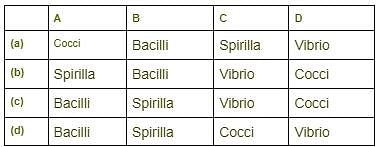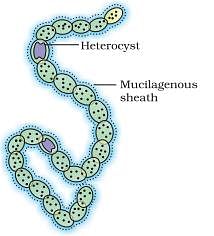Test: Kingdom Monera (NCERT) - NEET MCQ
15 Questions MCQ Test Biology Class 11 - Test: Kingdom Monera (NCERT)
Bacteria are grouped under four categories according to their shape. Study the given figures and select the correct option regarding this.




Which one of the following is an incorrect statement regarding mycoplasma?
| 1 Crore+ students have signed up on EduRev. Have you? Download the App |
What are the four categories of bacteria based on their shape?
Read the following statements regarding methanogens and select the correct option.
(i) They are included in the group Archaebacteria.
(ii) They are responsible for the production of biogas in gobar gas plants.
(iii) They live in hot sulphur springs.
(iv) They are present in the gut of several ruminant animals such as cows and buffaloes
Given figure is of filamentous blue green alga Nostoc Identify the parts marked as A and B and select the correct option.


Cyanobacteria are classified under which of the following kingdoms?
Which group of bacteria lacks a cell wall and can survive without oxygen?
Cyanobacteria are used in agricultural fields for improvement because they cause
Which one of the following bacteria fix nitrogen in legume plant roots ?
In 5-kingdom classification system, the kingdom that includes the blue-green algae, nitrogen-fixing bacteria and methanogenic archaebacteria, is
Identify the incorrect statement regarding bacteria:
|
182 videos|365 docs|153 tests
|


















